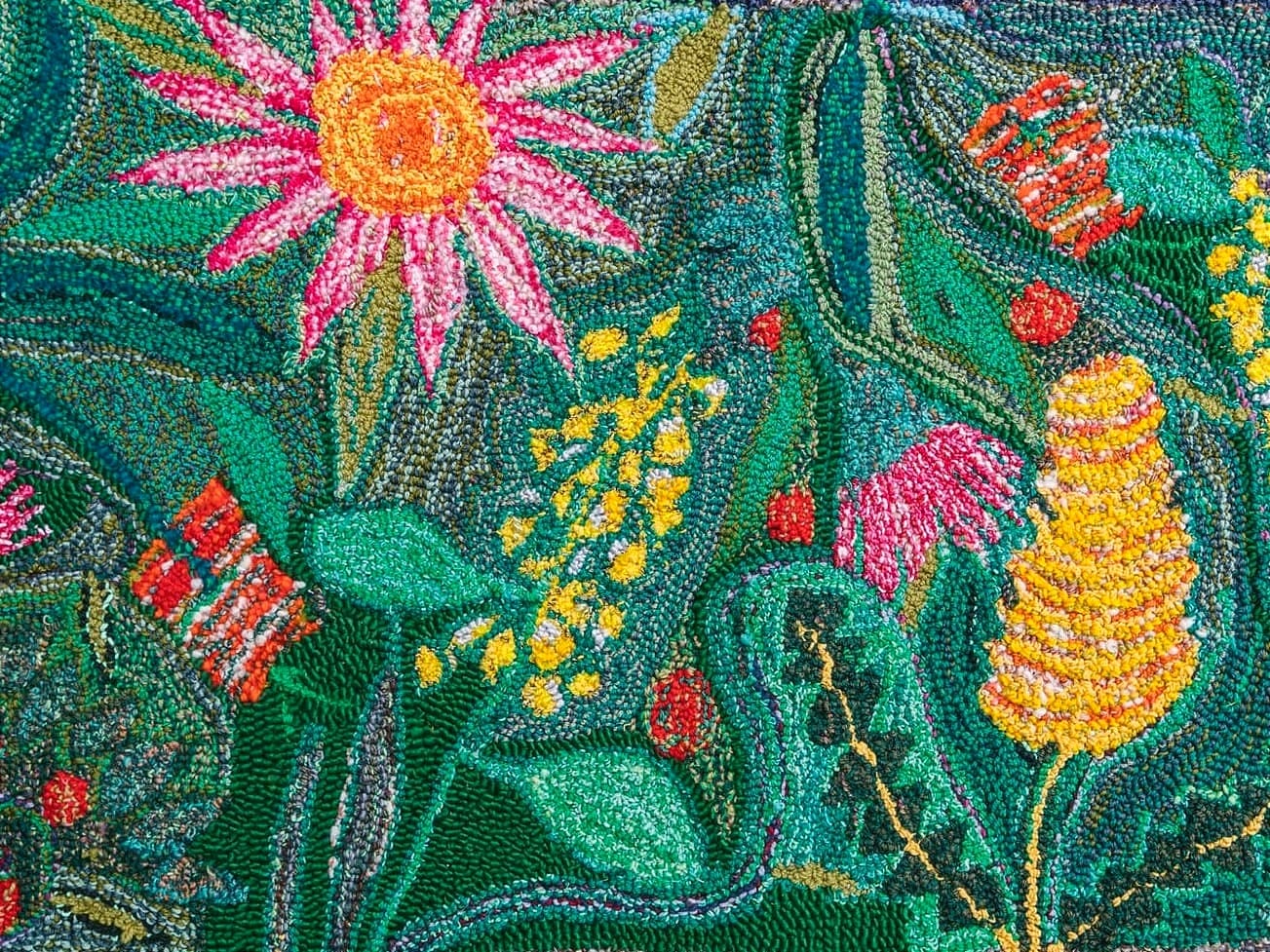
Paring life back to its essential elements has allowed this couple to find joy, even in the most challenging of times.
ON the verandah at Autumn Farm, overlooking the wetly green Bega Valley, there’s no shortage of curiosities that grab the attention. You might find yourself marvelling at the open-air bathtub, for instance. Or the window frames, painted rubber-glove pink and lemon yellow, bordered by a mural of hearts and birds. There’s the huge chorus of frogs that lives noisily in the pond. And right outside the back door, an obstacle course of wombat poo makes it clear that while this patch of land might belong to Annie Werner and Genevieve Derwent, they aren’t the only ones who call it home.
Right now, Derwent’s eye has been caught, instead, by something far easier to miss.
“Look at that perfect droplet,” she whispers.
Werner, in pink from hair to slippers, crouches before a nasturtium leaf, where a drop of water, no bigger than a pea, is balanced.
“Ooh. It is perfect.”

This, right here, is what life is all about for this couple: having the time and the energy to find wonder in the little things, and to share those moments.
It was a yearning for that kind of freedom that gave them the courage to leave Sydney, where they fell in love 20 years ago, and to move with their two children to the New South Wales south coast.
“We loved Sydney,” says Werner. “We did all the things. But we were ready to leave.”
Derwent agrees. “The kids were really little and that changes your focus, and how you spend your time. The attractions of the city seemed less relevant, I guess. And we had all these questions about how to parent well, how to be available and connected while living in an increasingly unaffordable city …”
Werner interjects: “… and the kind of life we wanted, and that we wanted for our kids—we couldn’t see that happening if we stayed in Sydney.”
(This is how their conversation typically unfolds, like waves ebbing and flowing at a shoreline.)

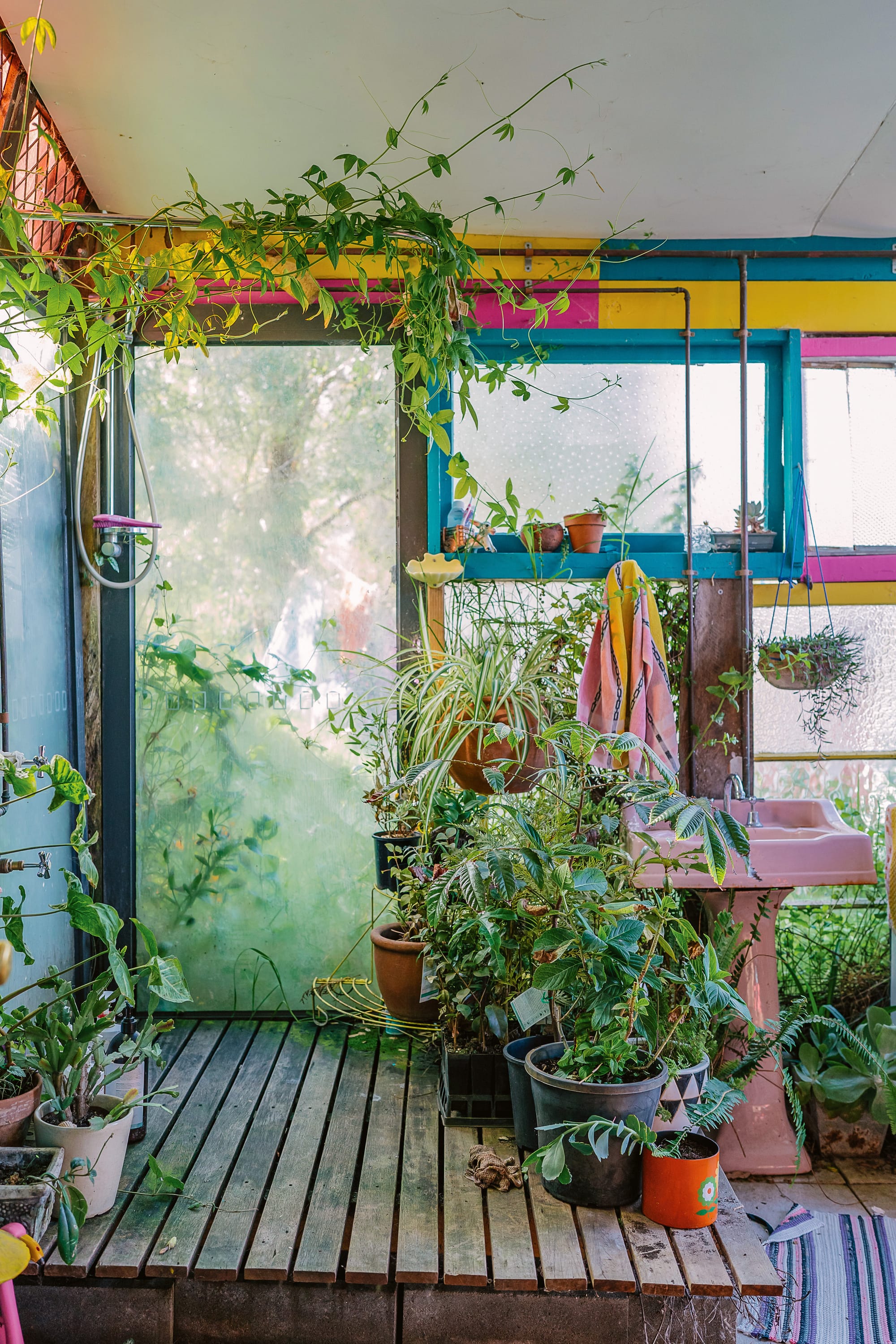

It was against this backdrop of uncertainty about where their family would end up that they began hearing stories about the area around Bega. Derwent was immediately interested; she’d spent childhood holidays in this neck of the woods, and was a big fan.
“We didn’t know anyone here, but we heard that cool things were going on,” says Werner. “Things we were into, like sustainability and permaculture. It felt like something was starting to happen. We also knew the land was beautiful and, at the time, cheap.”
In 2011, they went to see a seven-acre property for sale. “It was just a cow paddock, chopped off a big dairy farm,” recalls Werner, “but I remember saying, ‘This is it, isn’t it?’ So we scraped together a deposit and bought it.”
Keen on a light footprint, they designed a straw-bale house, which, for anyone not familiar, is built using rectangular bales as large bricks, attached to a wooden frame and then rendered. An eco-friendly use of what would generally be a waste product, it’s also relatively inexpensive, durable, warm in winter, cool in summer and low-risk for fire and pests. Even better, it’s essentially DIY, with a few extra pairs of hands.
“People would just rock up to help,” says Werner. “People we didn’t know, who were local and interested.”
Derwent continues: “I think it’s partly because a lot of them have moved here to create their life, so they really value the idea of helping others do the same.”
Back to Werner: “It’s a pretty awesome community. We dove headfirst into that as soon as we got here.”
The result was what they called “the tiny house”: 26 square metres comprising just one room, beneath a loft where the whole family slept. The children were only two and five when they moved in, so they didn’t need a huge amount of space. But even so.
“It was very small,” says Derwent.
“Very small,” Werner agrees. “But it was actually great for our kids. For that time in their life, it was really nice to be together. We had an outside dining area and an amazing vegetable garden. There was lots of cooking on the fire and playing outside. I think all four of us remember that time very fondly.”
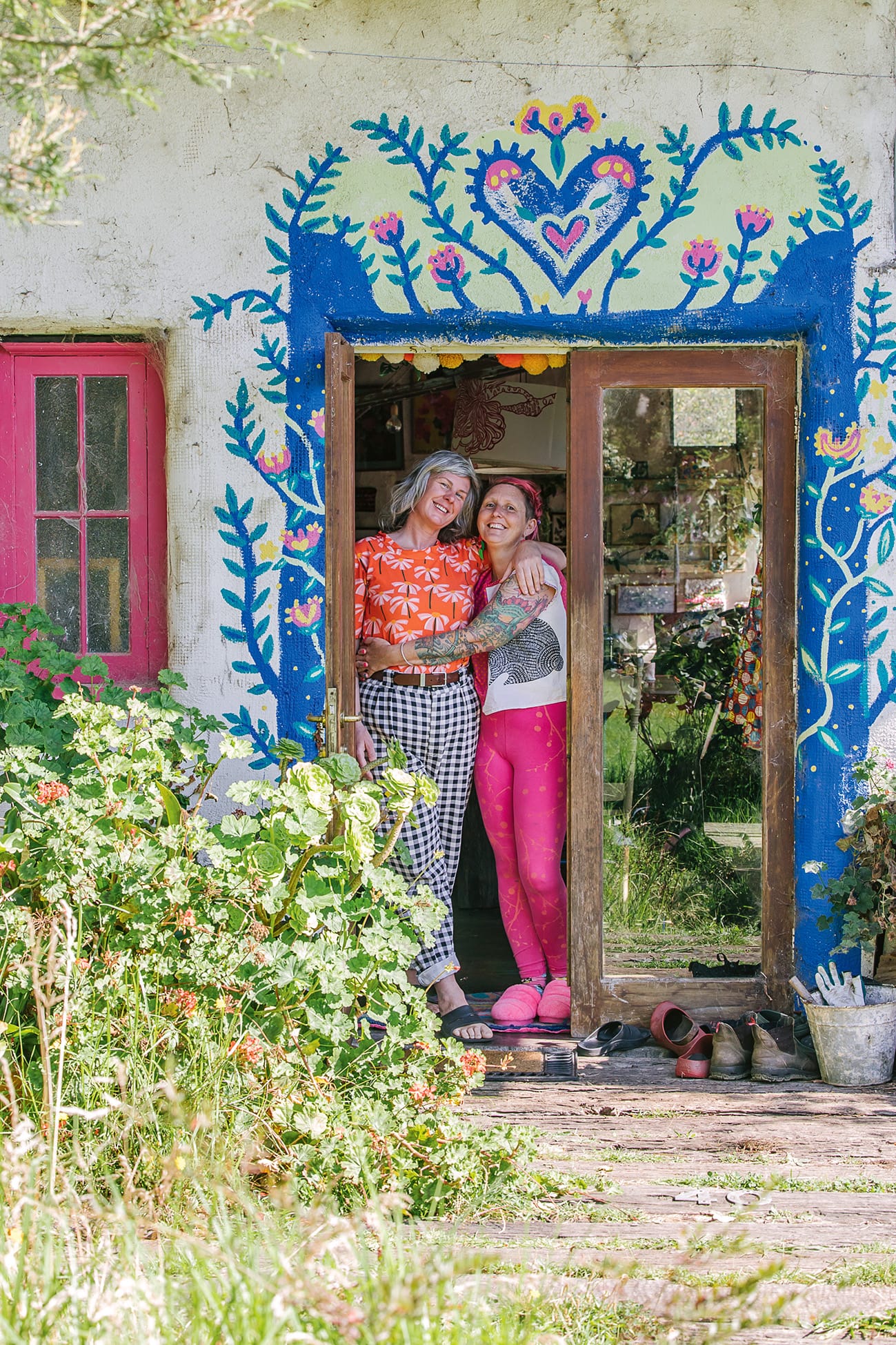

During their five years in the tiny house, Werner was diagnosed with breast cancer. She went through two mastectomies and chemotherapy while living in a house with no running water. No indoor bathroom. No kitchen. No privacy.
“It was hectic,” she admits, “but it was one of those things that we kind of just got on with.” For example, unable to climb the ladder to their bedroom, Werner slept outside on a daybed. They had no washing machine, so friends would help with their laundry.
In the thick of it, did she ever wish they were back in Sydney with a few more creature comforts?
“Not at all. I remember lying there, looking out at the hills and the trees, and feeling lucky that I was here. That I could just be where I was, in this beautiful, nourishing place.”
Says Derwent: “You used to say, ‘While I’m going through this, there’s a single mother somewhere, in some small flat, going through exactly the same treatment, without everything that we have.’”
You can imagine the jubilation when Werner was given the all-clear, and they were able to continue with their grand plan. The tiny house was just a trial run, she says, “to see if our dream was completely stupid. We’d never built anything before, and we didn’t actually know if we could do it. But we always planned to build a more normal-sized house.”
This is where we find ourselves today. Another straw-bale home, this one with three bedrooms—and doors! In the spacious living area, everything is handmade, recycled or repurposed. The bookshelves are a Jenga-style stack of sleepers, planks and bricks, filled with books, puzzles, framed photographs and plants. Bold orange, blue and pink walls are topped by a patchwork ceiling of reclaimed corrugated steel. There’s also art, kittens, macramé, Lego, pompoms, ceramic donkeys and an old collie-kelpie called Greg. It’s colourful and chaotic and welcoming.


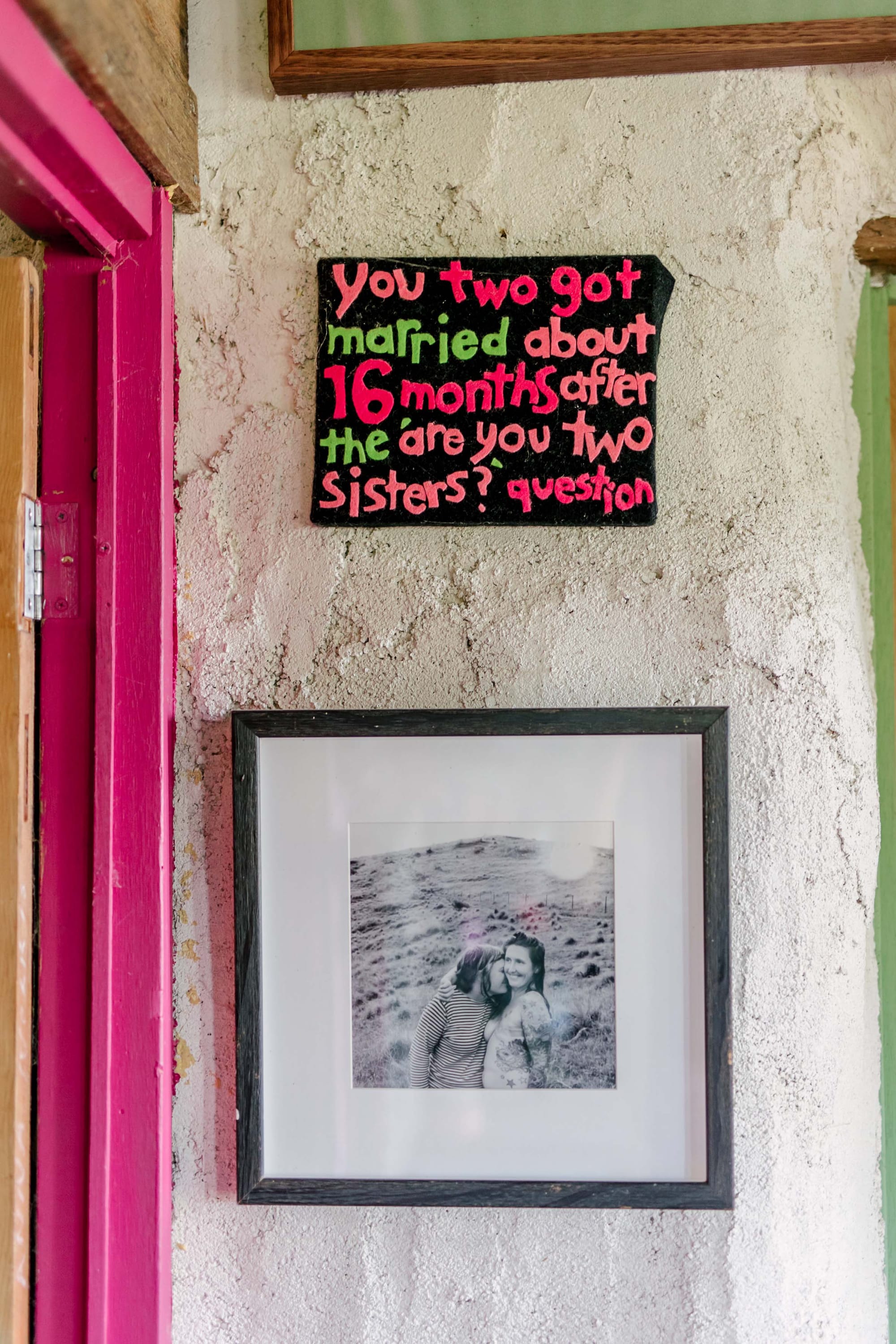
Derwent sets a plate of wholemeal shortbread on the long timber dining table, fresh from the oven that’s powered (along with the fridge, washing machine and shower) by solar panels on the roof.
“We’re off-grid, and her joy at a sunny day is so palpable,” says Werner, giggling. “I’ll come home and the table will be covered in all the things she’s cooked.” (Scroll through Derwent’s Instagram archive, @eggplantia, for examples.)
“Some people would see this as a form of deprivation, but I like living with limitations,” says Derwent. “It makes us feel more grateful when we have abundance. It’s like, oh the sun’s shining. Turn the oven on and bake a million things.”
It’s a way of life that requires a deep connection to the season, the weather, and the rising and setting of the sun. “Do we need to cook outside on the fire? Is the water tank full enough for a long shower? We’re very in tune with that now,” says Werner.
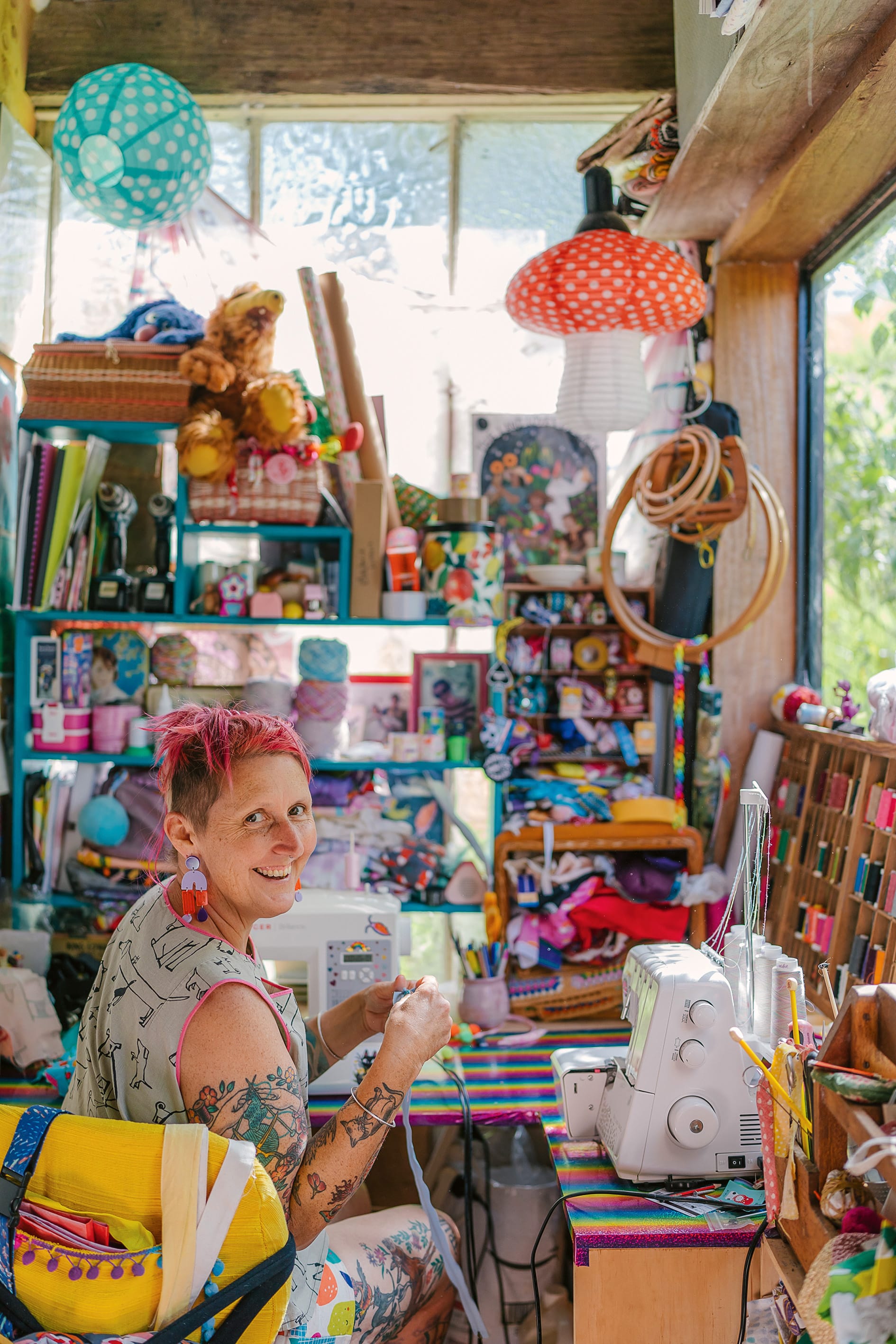

“The two most important things in my life are love and creativity.” Left, Werner in her “craft ensuite”, where she creates the couple’s clothes, mostly without patterns. Right, one of Werner's tufting works. Photography Jay Black.
If the kitchen is Derwent’s special place—in a jumble of cookbooks, pans, utensils and crockery— the sewing room is Werner’s. “It’s very small and just off the bedroom, so I call it the craft ensuite.”
This is where she makes their clothes, generally without a pattern, from dresses and dungarees to bags and swimwear. “I doubt there’d be a day when we’re not both wearing at least one thing I’ve made. Sometimes we’re head-to-toe,” says Werner.
“The two most important things in my life are love and creativity, and they are very interconnected. Inseparable, actually.”
When she discovered four years ago that her cancer had spread, this time showing up in her liver and bones, creativity took an even more critical, restorative role.
“Annie has always been super productive, hard-working—loves getting shit done,” says Derwent, turning to her wife. “But the drugs you use for cancer basically give you a chronic illness. It’s the best option because they work, but there’s also fatigue, pain, memory loss, nausea. So the last few years have been a big process of accepting those limitations in your body.” She stops suddenly. “Sorry. You can speak for yourself.”
Werner laughs. “It’s alright—you’ve probably got a better perspective than me, because I’m just in it. We go to the oncologist and they’ll say, ‘How have you been?’ and I’m like, ‘I don’t know. Ask her.’ Genevieve is the most amazing support person. She holds everything together. Anyway, it’s a new way of being in the world, and it’s very day to day. I don’t know until I wake up what the day is going to be like.”
And so she matches her choice of creativity to the way she feels, in mind and body. Sewing is soothing when she wants to be alone, in her little room. Knitting can be done anywhere: with company, in hospital, in the car. Then there’s Werner’s most recent pursuit: tufting, a rug-making technique that uses an electric gun to punch yarn through a canvas. It’s far more physical than other crafts, so she saves this for high-energy days, typically throwing herself into it outdoors, in her knickers, as Instagram followers of @annieautumnloves will know. “It’s so beautiful that you have the ability to take care of yourself through your creative processes,” says Derwent.
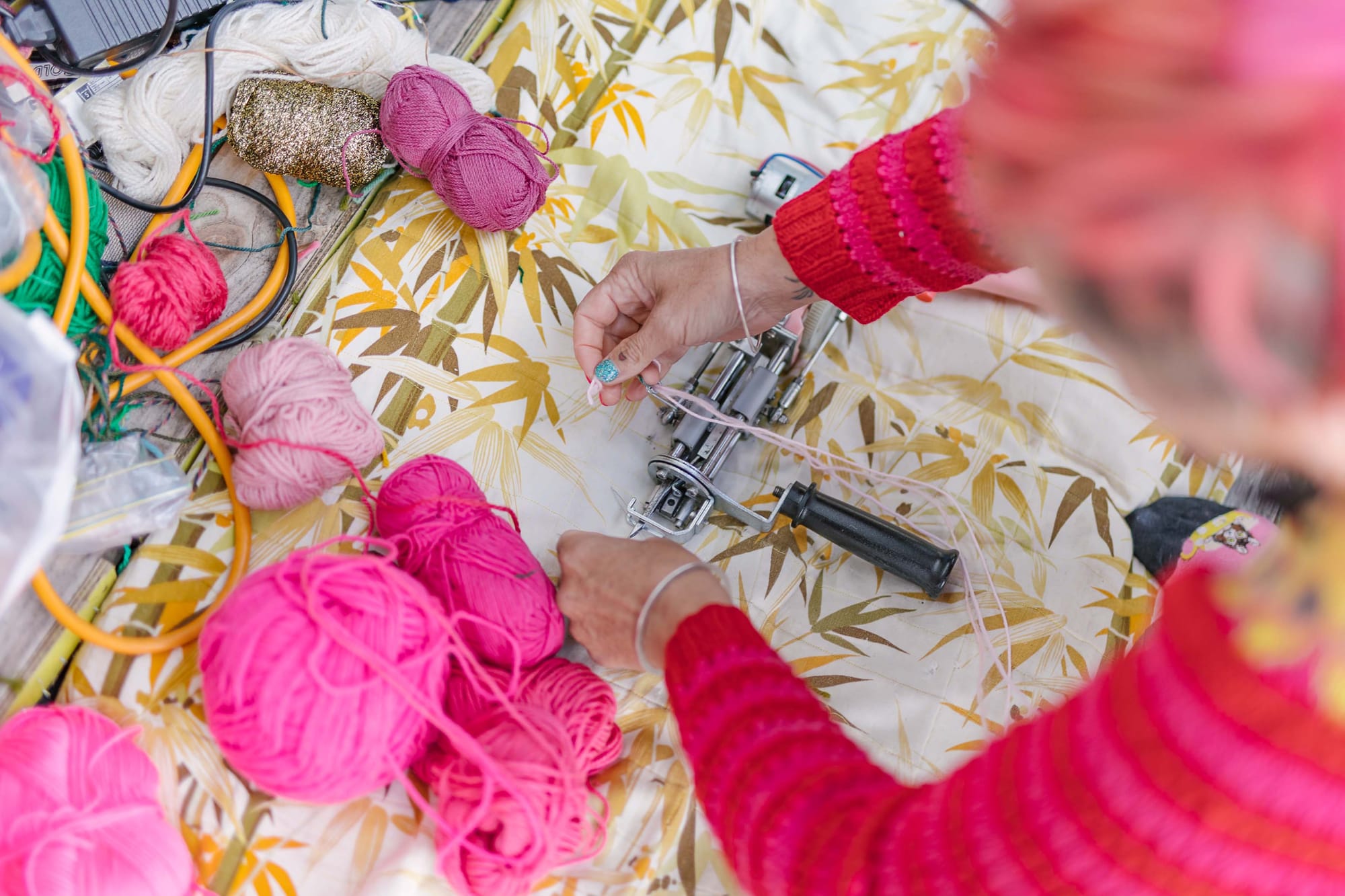

Like all of Werner’s handiwork, the half-made rug on the deck is a riot of colour. The same goes for her collection of tattoos. Rainbows, sunflowers, knitting needles and balls of wool wind around her arms and legs. Instead of accepting a breast reconstruction, Werner had her chest inked with a technicolour harvest festival. “I wanted a really vibrant cornucopia of life-giving foods, and my tattoo artist just riffed on that,” she says. “Vegetables are so beautiful.”
The couple has been in the house six years now, and it continues to evolve, much as they themselves do. The kids have turned 17 and 13. Werner, an English literature lecturer at the University of Wollongong’s Bega campus, is taking a year off to recuperate, and taking commissions for rugs. Derwent, who describes herself as a “grain nerd”, is working at a local bakery, with the condition that it remains part-time enough not to deplete her enthusiasm for cooking at home.
The one thing that hasn’t changed is their commitment to each other. “Our whole life has been set up to enable us to have the most time together, with our family, doing the things we love, in nature,” says Werner.
That’s what the outdoor bathtub is all about. “It has a fire underneath it,” Werner explains. “You fill it with water and heat it up. It was a full moon on the weekend. Bathing together under the stars surrounded by frog song is pretty special.”
After two decades of highs and lows together, the couple’s intimacy is profound. “We like each other more than ever, I reckon,” says Derwent. “And I would say that Annie’s cancer situation illuminates things. With the grief around that, there’s also amazing joy, and we have a lot of clarity that we don’t want to waste that. We’re not complacent.”
There’s also plenty of laughter. “That’s one of the strengths of our relationship,” Werner says. “We find a way to laugh even in the most horrible situation. Metastatic cancer is literally the worst, and I hate it. But we can always find the fun.”
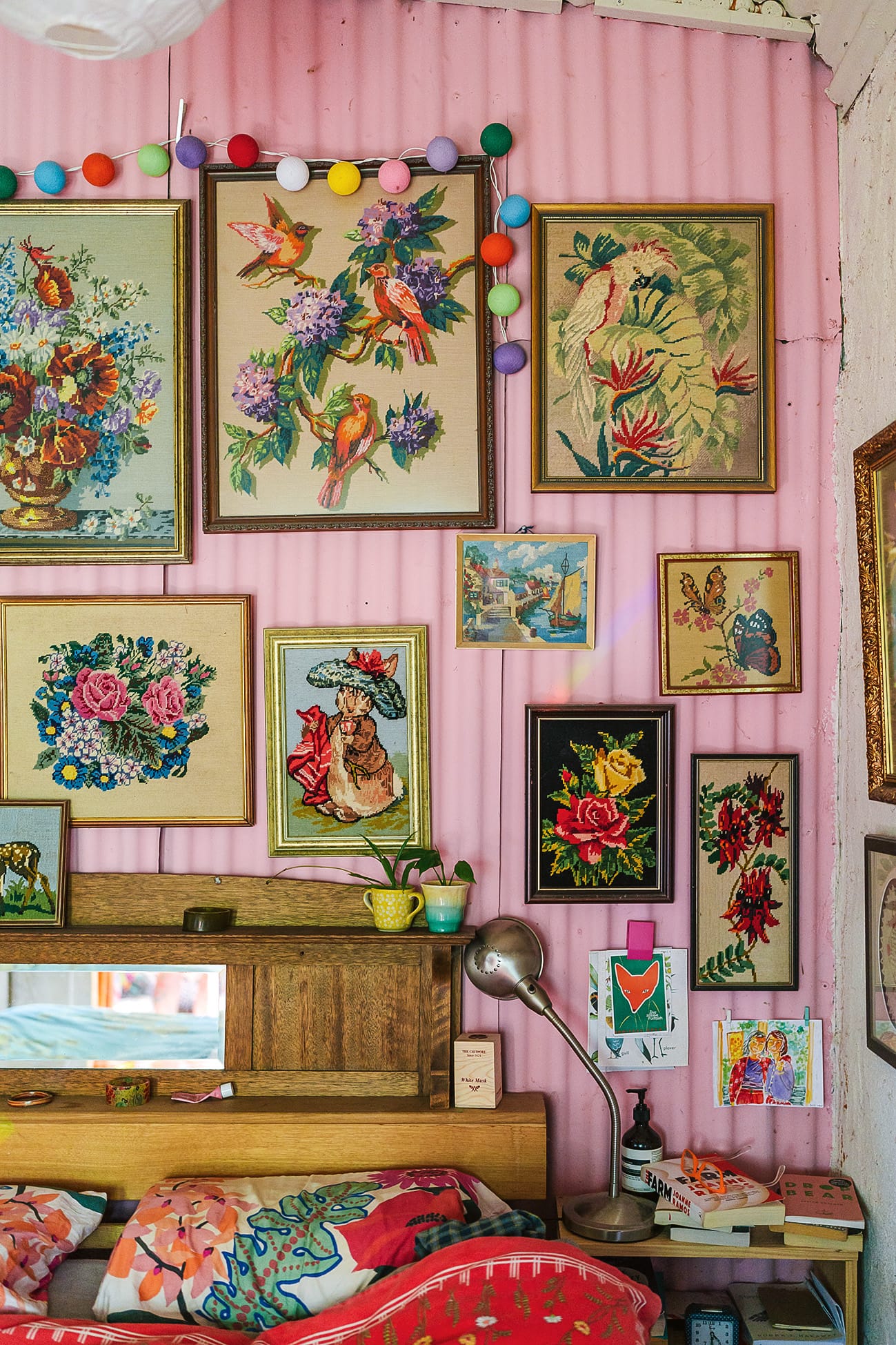
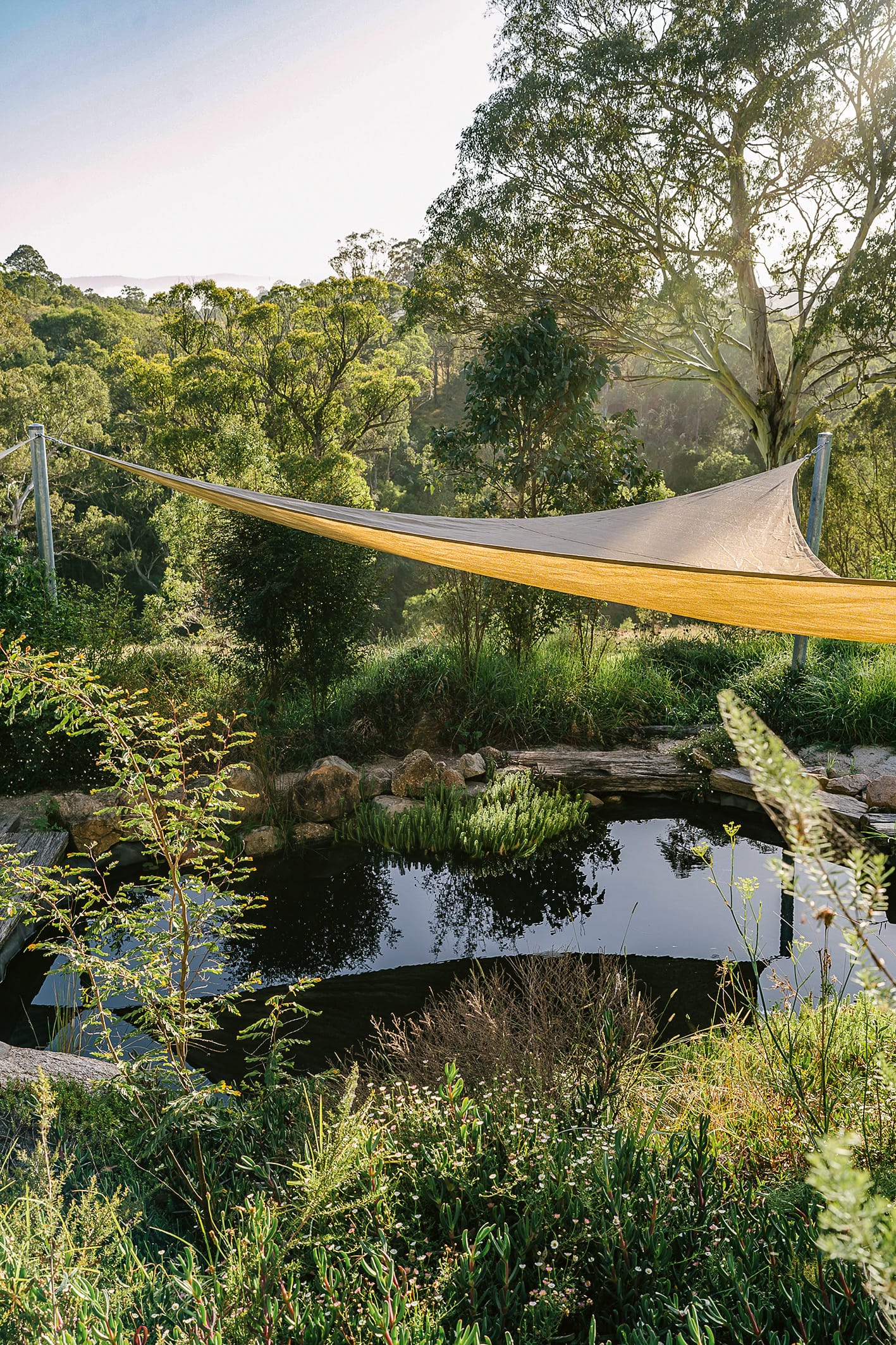
Left, assorted tapestries and curios. Right, the frog pond, where water is pumped and filtered through layers of gravel and sand. Photography Jay Black.
